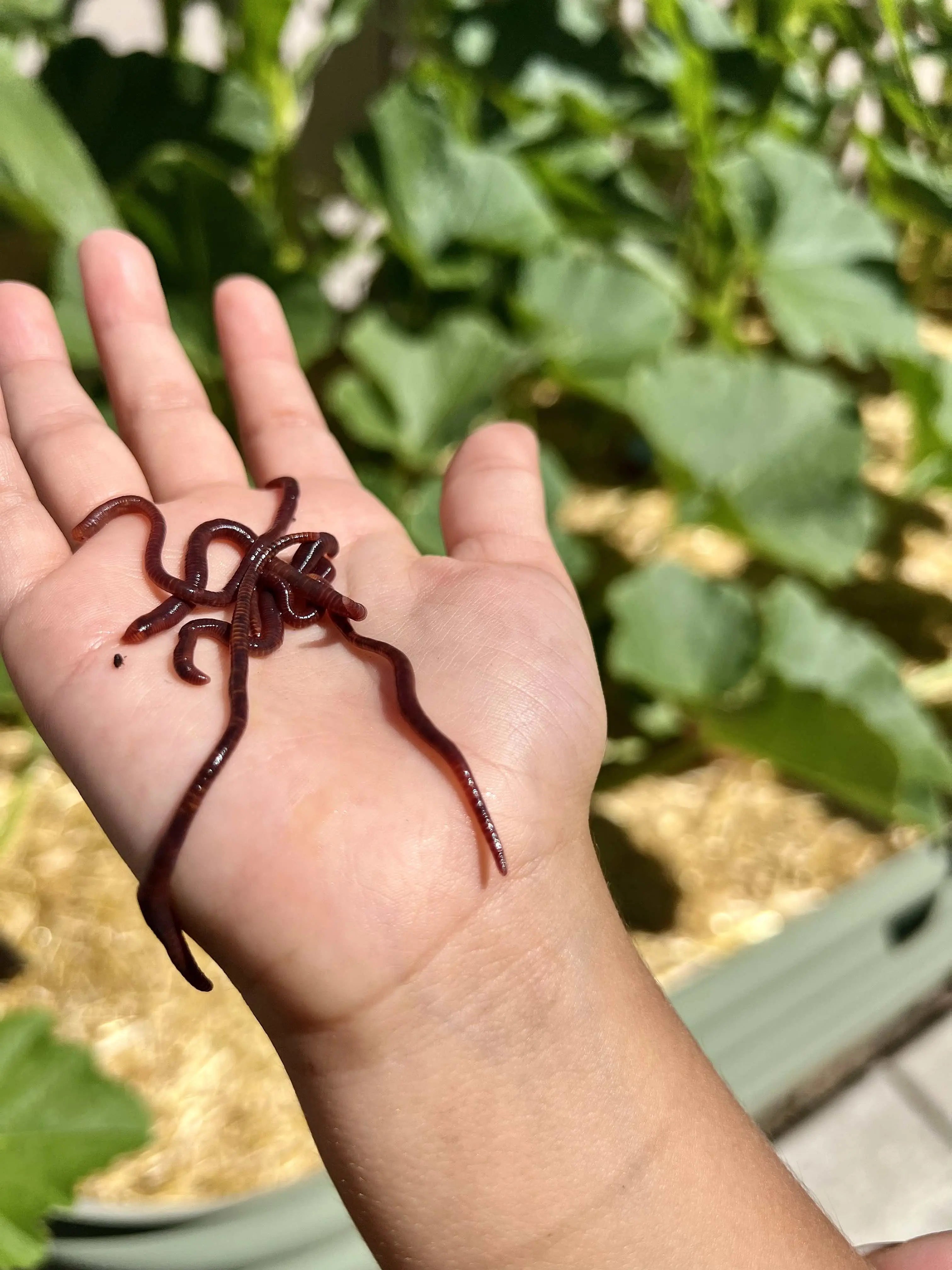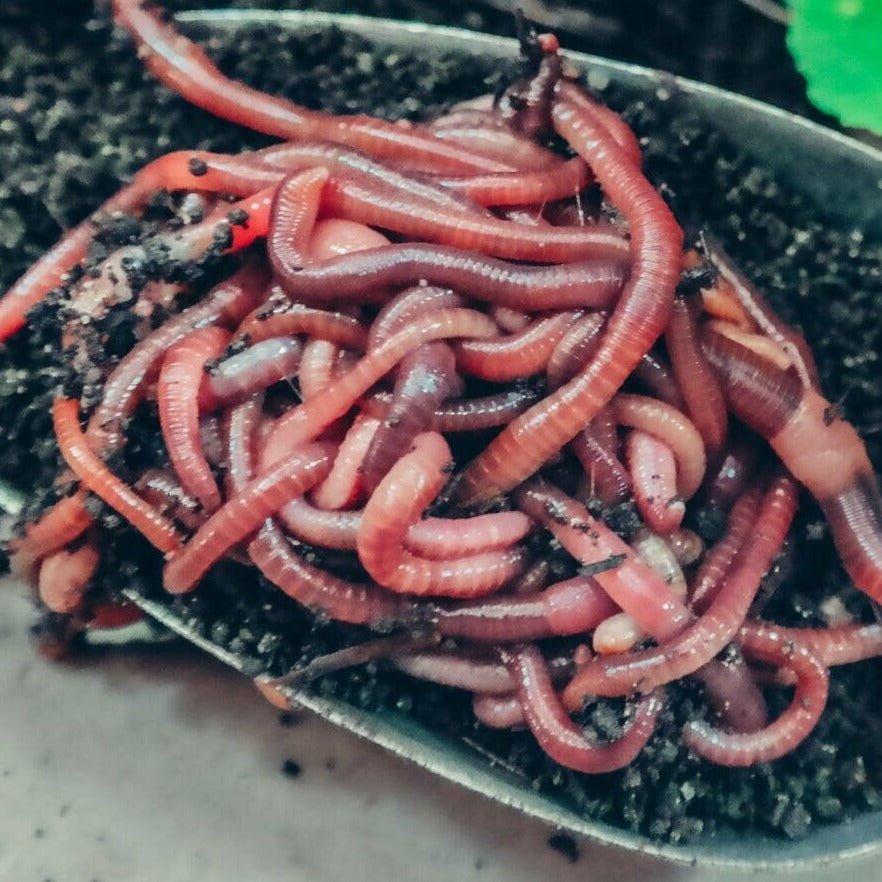Acquire Red Wiggler Worms - Suitable for Composting and Gardening
Acquire Red Wiggler Worms - Suitable for Composting and Gardening
Blog Article
Optimizing the Benefits of Red Wiggler Worms: A Comprehensive Guidebook for Home Gardeners and Urban Farmers
In the realm of sustainable gardening methods, red wiggler worms stand as unrecognized heroes, silently transforming natural waste right into nutrient-rich spreadings that can function marvels for dirt health. By discovering the details of exactly how to efficiently care for and maximize the advantages of red wiggler worms, individuals can open a wealth of opportunities for improving the sustainability and productivity of their horticulture endeavors.
Comprehending Red Wiggler Worms
Red Wiggler worms, renowned for their reliable composting capacities, are a varieties of earthworms extensively used in vermiculture techniques. These worms, clinically known as Eisenia fetida, thrive in decomposing natural material, making them excellent prospects for composting.
One secret quality of Red Wiggler worms is their reproductive price. These hermaphroditic creatures possess both male and women reproductive body organs, allowing them to reproduce rapidly under desirable problems. A fully grown Red Wiggler can create several spawn in a brief duration, guaranteeing a consistent population within a composting system.

Setting Up a Worm Container
When developing a worm bin for vermiculture functions, proper prep work and attention to detail are essential for creating a favorable atmosphere for Red Wiggler worms. Begin by choosing a suitable container for your worm container. This can be a plastic or wood container with a lid to keep moisture degrees and protect the worms from light. Make sure that the container has water drainage holes at the bottom to stop waterlogging.

Area the worm container in an amazing, dark area away from direct sunshine and extreme temperature levels. Regularly keep track of the wetness levels, including water if the bedding really feels completely dry or half-cracked. Feed the worms a well balanced diet of vegetables and fruit scraps, preventing citrus fruits, onions, and spicy foods. By following these steps, you can set up a flourishing worm container that will efficiently process natural waste right into nutrient-rich vermicompost for your yard.
Feeding and Maintaining Worms
Guaranteeing a well balanced and nourishing diet regimen is important for the health and wellness and efficiency of Red Wiggler worms in a vermiculture system. It is vital to prevent feeding them citrus fruits, onions, garlic, dairy items, meat, and oily foods as these can be hazardous to the worms or cause unpleasant odors in the container.
Appropriate dampness levels are also essential for the health of Red Wiggler worms. The bed linen should really feel like a damp sponge, offering sufficient wetness for the worms to take a breath through their skin. On a regular basis inspect the dampness levels and change by including water or dry bedding product as needed. Additionally, maintaining appropriate temperature level problems in between 55-77 ° F(13-25 ° C )will certainly make sure optimum worm task and reproduction. By vigilantly checking their diet regimen, dampness, and environmental problems, home gardeners and city farmers can sustain a effective and healthy and balanced Red Wiggler worm populace for composting purposes.
Collecting Worm Castings
To efficiently remove nutrient-rich worm spreadings from the vermicompost, an organized harvesting procedure is vital for maximizing the composting benefits. The first step in collecting worm castings is to encourage the worms to move to one side of the container.
After the spreadings have actually been gathered, it is very important to divide any staying worms from the spreadings to avoid damaging them during storage or application. One efficient approach is to produce conical stacks of castings under intense light. Worms will intuitively relocate far from the light, enabling easy separation and elimination.
Finally, the gathered worm castings need to be saved in a cool, dark, and completely visit this website dry location to keep their quality and performance as a nutrient-rich soil modification. By following these actions, home garden enthusiasts and city farmers can take full advantage of the benefits of red wiggler worms in their vermicomposting systems.
Making Use Of Worm Castings in Gardening
The consolidation of nutrient-rich worm spreadings right into yard dirt can dramatically boost plant growth and general dirt health and wellness. Worm castings, additionally known as vermicast, are an all-natural plant food created by red wiggler worms as they break down raw material. These castings are abundant in important nutrients like nitrogen, phosphorus, potassium, and helpful microorganisms that advertise plant growth and enhance dirt framework.
When making use of worm castings in horticulture, it is necessary to mix them thoroughly into the soil or utilize them as a leading clothing around plants. The slow-release nature of worm spreadings guarantees a steady supply of nutrients to plants gradually, minimizing the threat of nutrient leaching and promoting lasting soil fertility. Furthermore, worm spreadings help enhance soil oygenation, water retention, and microbial task, producing a healthy and balanced setting for plant origins to flourish.

Final Thought
In final thought, the usage of red wiggler worms in home horticulture and city farming can substantially profit soil health and plant growth. By comprehending just how to establish up and preserve a worm container, feed the worms appropriately, and collect their nutrient-rich learn the facts here now spreadings, gardeners can maximize the advantages of these earthworms.
In the realm of lasting horticulture practices, red wiggler worms stand as unsung heroes, quietly changing organic waste into nutrient-rich castings that can work wonders for dirt wellness.When developing a worm container for vermiculture purposes, correct prep work and focus to detail are important for creating a favorable environment for Red Wiggler worms. The first action in harvesting worm spreadings is to motivate the worms to migrate to one side of the container. Worm spreadings, likewise understood as vermicast, are an all-natural plant food generated by red wiggler worms as they damage down organic matter. By understanding how to set up and keep a worm bin, feed the worms appropriately, and harvest their nutrient-rich castings, garden enthusiasts his explanation can maximize the benefits of these earthworms.
Report this page